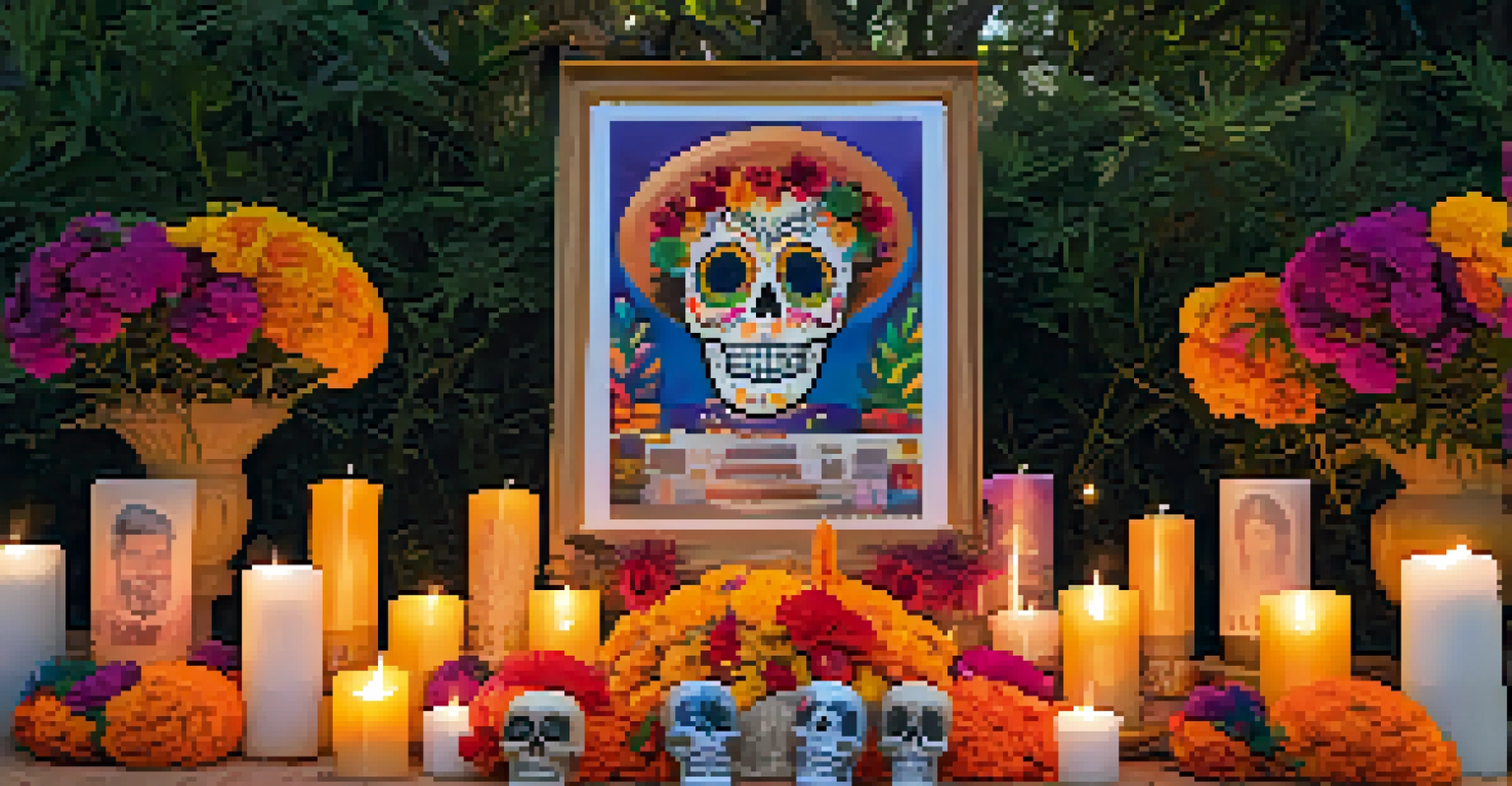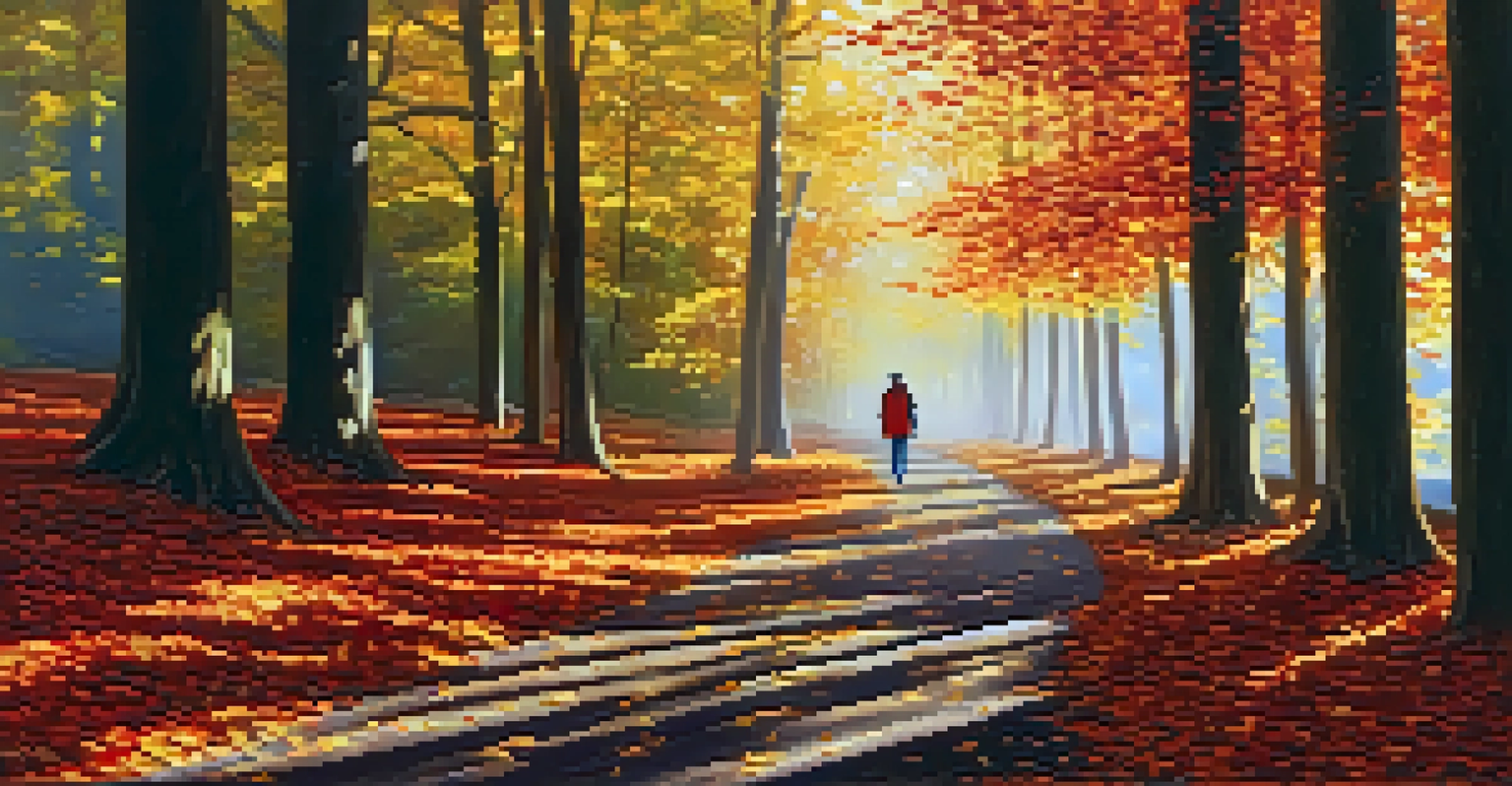Rituals and Ceremonies: Connecting with Sacred Spaces

Understanding Rituals: The Art of Meaningful Actions
Rituals are structured actions that hold deep significance, often tied to cultural or spiritual beliefs. They can be as simple as lighting a candle or as elaborate as a wedding ceremony. Ultimately, rituals serve to mark transitions in our lives, offering a sense of continuity and connection to something greater.
Rituals are the formulas by which harmony is restored.
Think of rituals as the threads that weave together the stories of our lives. For instance, a graduation ceremony not only celebrates academic achievement but also symbolizes the transition into adulthood. By participating in such rituals, we create shared experiences that strengthen our bonds with others.
In essence, rituals help us express our values and beliefs, making the intangible more tangible. They provide a framework through which we can navigate life's complexities, reminding us of our shared humanity and the sacred spaces we inhabit.
The Role of Ceremonies in Marking Life's Milestones
Ceremonies are often larger-scale events that celebrate significant life milestones, such as births, marriages, and deaths. These gatherings bring together friends and family, creating a collective experience of joy or sorrow. By honoring these pivotal moments, we acknowledge the cycles of life and the importance of community.

Consider a wedding ceremony, where two individuals commit to a lifelong partnership. This event not only reflects their love but also involves the support and presence of their loved ones, creating a shared sacred space. Such ceremonies allow us to pause and reflect on our relationships and the commitments we hold dear.
Rituals Connect Us to Meaning
Rituals serve as meaningful actions that mark transitions in our lives, fostering a sense of continuity and shared experiences.
Ultimately, ceremonies help us to process emotions and create lasting memories. They serve as reminders of our connections to one another, reinforcing the idea that we are never alone in our journeys, even in times of transition.
Creating Sacred Spaces: The Power of Intention
Sacred spaces are physical or mental environments where individuals feel a connection to something beyond themselves. These spaces can range from a serene room in your home to a natural setting like a forest or beach. The key is to create an atmosphere that encourages reflection, mindfulness, and spiritual connection.
Community is much more than belonging to something; it’s about doing something together that makes belonging matter.
For example, consider setting aside a corner of your living room as a meditation space. By dedicating this spot to quiet reflection, you infuse it with intention, making it a sacred space for personal growth. Incorporating elements like candles, crystals, or meaningful objects can further enhance this environment.
By nurturing sacred spaces, we cultivate moments of peace and clarity in our often chaotic lives. They serve as reminders to pause, reflect, and connect with our inner selves, ultimately deepening our understanding of our place within the larger universe.
The Intersection of Culture and Spirituality in Rituals
Rituals and ceremonies are often deeply rooted in cultural traditions, reflecting the beliefs and values of a community. Different cultures have unique practices that connect individuals to their heritage and spirituality. This intersection creates a rich tapestry of rituals that can be both personal and communal.
For instance, the Día de los Muertos celebrations in Mexico honor deceased loved ones through altars, offerings, and vibrant festivities. This ritual not only preserves cultural identity but also fosters a sense of belonging and connection among community members. It highlights how rituals can bridge the gap between the past and present.
Ceremonies Strengthen Community Bonds
Ceremonies celebrate significant life milestones, bringing together friends and family to honor shared commitments and connections.
Exploring the rituals of various cultures can deepen our appreciation for diversity and the shared human experience. By understanding these practices, we can find common ground and learn how sacred spaces are created and honored around the world.
Nature as a Sacred Space: Finding Connection in the Outdoors
Nature can serve as one of the most profound sacred spaces we can access. Whether it’s a quiet forest, a serene beach, or a majestic mountain, these natural settings have the power to inspire awe and reflection. Being in nature allows us to disconnect from the noise of daily life and reconnect with our inner selves.
Imagine taking a solitary walk through a beautiful park, where the rustling leaves and chirping birds create a symphony of sounds. This environment encourages mindfulness, helping us to focus on the present moment and appreciate the beauty around us. Such experiences can be both grounding and rejuvenating.
By intentionally seeking out these natural sacred spaces, we invite moments of peace and clarity into our lives. They remind us of our connection to the earth and the cycles of life, fostering a sense of gratitude and reverence for the world around us.
Rituals for Personal Growth: Embracing Change and Transformation
Incorporating rituals into our daily lives can facilitate personal growth and transformation. Whether it’s through journaling, meditation, or creating vision boards, these practices help us set intentions and reflect on our progress. They provide structure and motivation to pursue our goals and dreams.
For example, a morning ritual of mindfulness can set a positive tone for the day ahead. By dedicating a few moments to breathe deeply and focus on gratitude, we create a mental space that promotes clarity and resilience. This intentional practice can empower us to face challenges with confidence.
Nature as a Peaceful Sacred Space
Natural settings provide profound sacred spaces that inspire reflection and gratitude, helping us reconnect with our inner selves.
Through these personal rituals, we cultivate a deeper understanding of ourselves and our aspirations. They serve as powerful tools for reflection and growth, reminding us that change is a natural part of life and that we have the ability to shape our own journeys.
The Impact of Community in Rituals and Ceremonies
Community plays a vital role in the formation and execution of rituals and ceremonies. These shared experiences can strengthen bonds, foster support, and create a sense of belonging. When we gather to celebrate or mourn, we affirm our collective humanity and the importance of our relationships.
For instance, community rituals such as potlucks or seasonal festivals encourage connection and collaboration. They provide opportunities for individuals to share their stories, traditions, and values, creating an enriched communal identity. This sense of togetherness can be especially comforting during challenging times.

Ultimately, rituals rooted in community help us navigate life's ups and downs together. They remind us that we are part of something larger, creating a shared sacred space where love, support, and understanding flourish.